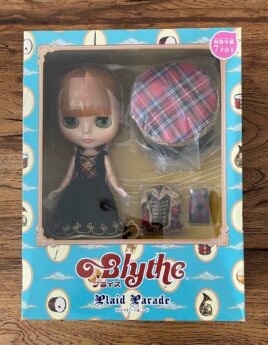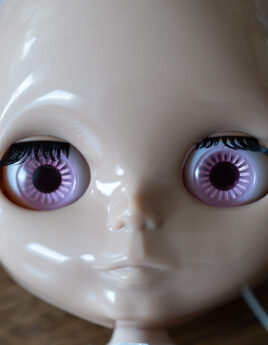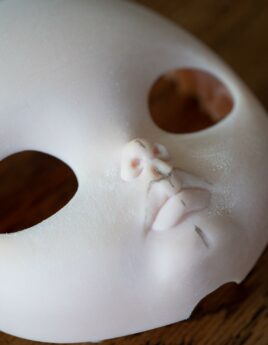About Blythe
The toy company Kenner originally introduced the Blythe-doll to the US market in 1972. The original full sized doll measures 28 cm respectively 12 inch on a 1/6 scale.
The most distinctive feature of a Blythe doll is her oversized eyes and head. Controlled by a special mechanism inside the head, her eyes can change both color and gaze direction—creating an almost lifelike sense of personality. But ironically, it was these very eyes that led to the doll’s initial failure. When the first Blythe dolls were released in 1972, their unusual appearance frightened many children, and rumors of nightmares began to spread. After just one year, production was discontinued. For a long time, Blythe remained a forgotten curiosity known only among doll collectors.
That changed in 1997, when American photographer Gina Garan received a vintage Blythe as a gift from a friend. She began using the doll to practice her photography skills and was immediately captivated by the expressive power of Blythe's eyes and features. The results were so striking that she started taking her doll with her on her travels—and eventually published a book of Blythe photography.
In December 1999, these photos caught the attention of toy company CWC in Japan. They immediately saw the doll’s potential for the Japanese market, where cuteness and character expression play a huge cultural role. In 2001, in collaboration with toy manufacturer Takara, CWC reintroduced Blythe to the world. Since then, more than 250 new Blythe editions—including full-size Neo Blythes and the miniature Petite Blythes—have been produced.
What followed was a worldwide revival and a growing community of devoted fans. Today, Blythe dolls are transformed by artists through carving, sanding, repainting, wig styling, and eye customization. These unique, expressive dolls are no longer toys—they’re artworks, often given realistic features and strong character identities.
The Blythe community remains niche, but it is steadily growing. While many connections are made online, conventions and exhibitions now take place across the globe, bringing fans and artists together.
For me, Blythe is an artisanal, deeply creative project. It usually takes me between three and five days to complete one custom doll. The final price depends on many factors: the base doll (which can vary in cost and quality), the eyes, the hair, the body, and the hours of work. For wigs, I use a variety of materials, including synthetic fibers, mohair, and luxurious Suri Alpaca. Real-hair wigs require the delicate process of inserting each strand by hand—a task that adds an extra full day of work but results in a beautifully soft and natural look.
Each Blythe I create is a unique, one-of-a-kind collector's item. These dolls are not factory-made—they carry the marks of an artist’s hand and heart. Prices start at USD 500, reflecting the time, craftsmanship, and materials that go into every piece.
© 2025 NIMA DOLL



